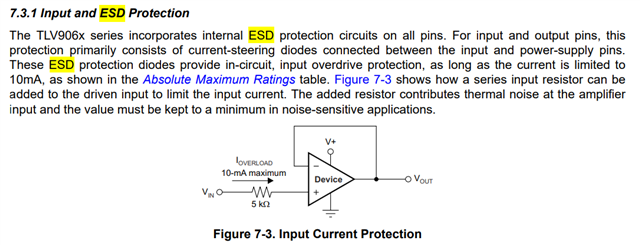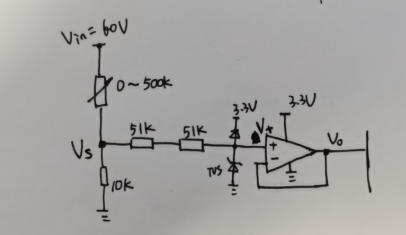Tool/software:
Hi Team,
For TLV9062 it shows the below typical application, could you please help to check how customer determined the largest input resistor they could add at the device in+ pin? The datasheet mention use a minimum resistor at a noise sensitive system, but it doesn't mention the up limitation for this resistor. Could you possible help to double check? Thanks a lot for your help.

Best regards
Jie


